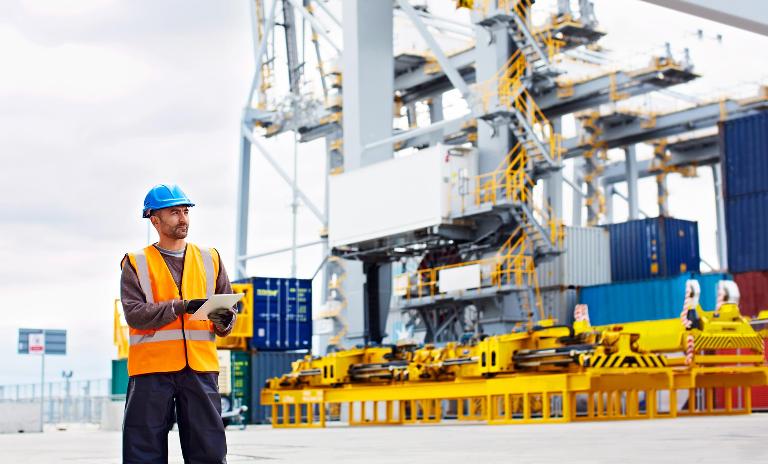

The digitalization of international ports
Europe and China travelling in different directions
Because of their leading role in worldwide trade flows, automation and efficiency improvement of European as well as Chinese ports have been important topics for more than 20 years. Technologies like partially automated cranes, Automated Guided Vehicles (AGVs) and automated yard planning are common in leading European and Chinese ports. With respect to digitalization and connectivity, however, their approaches are different: European ports are adventurously exploring new technologies, whereas Chinese players are acting with more consideration.
Europe has traditionally been a leader with respect to new port technologies. For example, the Port of Gothenburg offered shore to ship power supply as early as 1989, before being the first port to introduce a high-voltage onshore power supply in 2000. The same holds for automation and digitalization. In 1993, the Port of Rotterdam offered the world’s first automated terminal, with AGVs as its icon.
Recently, leading European ports have been pushing far beyond automation. They are aiming at a competitive advantage by inter-connecting technical components and integrating various stakeholders of the port community. Rotterdam, for example, is working on equipping its quay walls and roads with sensors that gather multiple data streams. The compiled information will be used to improve decision making. Overall, the port expects cutting berthing times by up to one hour through the application of IoT. Barcelona, on the other hand is working on an IoT network to dispatch maintenance staff in the facility and to identify the precise location of the port’s maintenance fleet vehicles in real time. A third example is the Port of Hamburg which, together with partners, is testing 5G in a real-life industrial environment. 5G is expected to play an important role for the Internet of Things as well as for Connected Industry use cases.

Europe: Pioneer for port innovation
Why do European ports play a leading role with respect to connection and integration? Firstly, many European ports are inner-city ports which are suffering from congestion caused by a lack of transparency and the resulting inefficiencies. Secondly, European ports are aiming at differentiation: from each other (especially north range ports), from alternative shipping routes and from other transport modes.
Figuratively speaking, European players are setting sail like Columbus to explore new "digital horizons". This brings the risk of getting lost or investing time and effort in the wrong (not winning) technology. The challenge for European ports and other logistics players is to achieve a critical mass with their initiatives. If different players only create isolated solutions, they will only get a limited return. The real value-add of digitalization will be unlocked if stakeholders are cooperating and integrating along the supply chain. That means the island initiatives need to be sensibly integrated to optimize the supply chain as a whole. Also, it remains to be seen how many breakthrough applications can be created on the foundation of IoT data pools and if innovations will be revolutionary or become niche products.
China: Cautious observer and practical executor
Chinese ports are also pushing automation and digitalization. One example is the world's biggest automated container terminal, the Shanghai Yangshan Deep Water Port. Another example is Ningbo, which is upgrading its hardware and aiming at achieving a semi-automated yard.
However, compared to the European digital leaders, Chinese ports seem to be moving at a slower pace with respect to port digitization. They focus on "mature" automation and efficiency improvement systems, go with the flow and implement what has been proven useful, but spend with caution. Reasons for this are manifold, like less pressure from labor costs and environmental regulations as well as the relatively comfortable position of Chinese ports at the source of trade flows. Beyond that, the main focus of China's government as well as industry players is to achieve end-to-end control over trade flows. That's why Chinese companies are strongly investing in ports and terminals along the 21st Century Maritime Silk Road.
Their slower approach ultimately puts Chinese ports in a good starting position to digitize the entire network through one standard system for integration and data exchange. This would allow for a critical mass of stakeholders along the supply chain. However, it remains to be seen how the controlled trade corridors perform in comparison to the beaten paths. Further, end-to-end control over trade corridors also needs to be translated into full transparency and control as a competitive advantage over the North Range ports.




